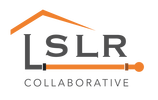Understanding Replacement Techniques
|
|
The goal of replacement is to remove the entire service line in as efficient a manner as possible while minimizing impacts on the household, business, or school and the public. Several field practices can be used to replace service lines, and conditions at a particular location will determine which approach is best.
OptionsOpen trench - Conventional approach that typically requires cutting and breaking of surface material and excavation of soil from the point of connection to the main along the entire length of pipe to be replaced.
Replacement on new routes - A pipe replacement technology whereby the discarded pipe is left in the ground and a new pipe is installed along a different route using a trenchless method such as impact moling or guided boring. Two access pits are excavated, one at the point of connection at the water main and the other at the curb stop. An additional access pit can be required at the building and at the water meter. Replacement using existing routes (pipe pulling, pipe spitting) – Currently the preferred technique. This approach removes or displaces existing pipe while simultaneously replacing it with a new pipe. Techniques include pipe pulling, which removes the existing pipe and pipe splitting, leaving the existing pipe in the ground but enabling the new pipe to be installed along the original route. |
|
With the access pit dug and the lead service disconnected from interior plumbing, a cable is fed through the existing lead pipe and a mechanical device is attached to the cable at one end. The cable is then pulled from the other access pit using a backhoe or winch. The mechanical device serves as an anchor and the lead pipe is removed from the ground when the cable is pulled. New replacement pipe is attached to the mechanical device and pulled into the ground simultaneously.
|
Read more: |
Factors to consider when selecting a technique
Any construction activity requires placing the correct equipment and personnel in the field to accomplish the activity. When planning for full LSL replacement, preparation can include evaluating site conditions so replacement can proceed smoothly. Factors affecting the use and performance of lead pipe rehabilitation and replacement technologies can be grouped into the following categories. All of these factors impact the technology selection and ultimately the cost of replacement. Typical practice is to utilize the most cost-effective technology working within site conditions.
|
Non-Controllable Factors
Site-specific characteristics not easily altered or controlled include:
Controllable Factors
Steps can be taken in approaching installation work to control: |
Turning a curbstop.
Source: Milwaukee Water Works |
- Time the water supply is disconnected
- Overall speed of operation
- Disruption to automobile and pedestrian traffic
- Environmental nuisance, such as noise and generation of dirt
- Adverse effects on water quality
- Potential interruption to other utility services
Utilities survey - Factors affecting performance of technologies
Source: adapted from AWWA Research Foundation
|
Appropriate Health and Safety Precautions
Construction involving heavy equipment working in a built up environment presents a number of risks to workers and the public. Service line replacement, like similar construction activities, should include appropriate safety measures, such as:
Throughout the LSL replacement process, from initial planning to project closeout, careful attention must be paid to safety regulations and best practices, including all applicable Occupational Safety and Health Administration (OSHA) regulations. |
Additional Resources |


